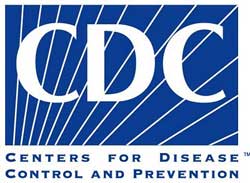Cyclospora, a parasite associated with travel to tropical climates, typically sickens about 150 Americans each year. So, last summer when spikes in cases began appearing, health officials took note.
 The Centers for Disease Control and Prevention (CDC) was not the first to report the 2013 outbreaks, which eventually sickened 631 people in 25 states. The agency lagged weeks behind various state health departments and media outlets in its announcement of the outbreaks. Deja vu when cyclospora cases began to spike again this summer. Only this time the agency’s silence can be measured in months, not weeks. The CDC has not made an announcement about the outbreak and has not responded to an inquiry made by Food Poisoning Bulletin two weeks ago to determine what, if any, role it is playing in the investigation.
The Centers for Disease Control and Prevention (CDC) was not the first to report the 2013 outbreaks, which eventually sickened 631 people in 25 states. The agency lagged weeks behind various state health departments and media outlets in its announcement of the outbreaks. Deja vu when cyclospora cases began to spike again this summer. Only this time the agency’s silence can be measured in months, not weeks. The CDC has not made an announcement about the outbreak and has not responded to an inquiry made by Food Poisoning Bulletin two weeks ago to determine what, if any, role it is playing in the investigation.
When clusters of food poisoning caused by bacteria, such as E.coli or Salmonella, start popping up, health officials can do tests to determine the genetic “fingerprint” of the strain that sickened each person to see if they are a match. That kind of testing doesn’t exist for cyclospora. So investigators rely on information gathered from interviews with patients and from traceback investigations of possible food sources.
Last year’s cases were attributed to different sources. Iowa and Nebraska determined their 239 cases were linked and that the food source was commercial bagged salad mix produced by Taylor Farms of Mexico and served at Olive Garden and Red Lobster restaurants. Many of the 278 illnesses in Texas were attributed to cilantro imported from Mexico. The rest of the illnesses, 126 cases in 22 states, went unsolved.
Health officials haven’t had much luck identifying food sources this year, either. Since the third week in June, roughly 300 cases of cyclosporiasis have been reported from states including Arkansas, Florida, Georgia, Connecticut, Maine, Maryland, Massachusetts, Michigan, Montana, Nebraska, New York, Ohio, Texas and Washington. The states with the most cases are Texas with 164, New York with 26 and Florida with 21.
Symptoms of cyclosporiasis can last up to two months and include diarrhea, abdominal cramping, bloating, gas, nausea, fatigue, loss of appetite, weight loss, vomiting, body aches, low-grade fever, and other flu-like symptoms. Anyone experiencing these symptoms should see a doctor.
Cyclosporiasis is commonly treated with an antiobiotic that contains sulfa called Trimethoprim/sulfamethoxazole (TMP/SMX) which is sold under the brand names Bactrim, Septra and Cotrim. There isn’t an effective sulfa- free alternative, so for patients with sulfa allergies, treatment of symptoms may be the only option.




